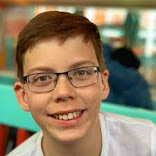Emotional Outbursts & Meltdowns in ASD

Parenting any teenager comes with emotional ups and downs. But for parents of autistic teens, emotional outbursts and meltdowns can feel particularly intense, unpredictable, and exhausting. What may look like “overreaction” is often the visible tip of an iceberg—weeks of accumulated stress, sensory overload, or the fatigue of constant social effort. This chapter explores how to understand the roots of meltdowns, respond with compassion, and build preventive systems that reduce escalation. Parents cannot eliminate meltdowns entirely, but they can transform how their family experiences them. Understanding Emotional Outbursts in Autistic Teens Meltdown vs. tantrum: A tantrum is usually driven by a goal (to get something). A meltdown is a nervous system overload where self‑control is lost. Shutdowns: The quieter cousin of meltdowns—teens may withdraw, go non‑verbal, or seem “frozen.” Triggers: Common causes include sensory overload, unexpected changes, prolonged social mask...



